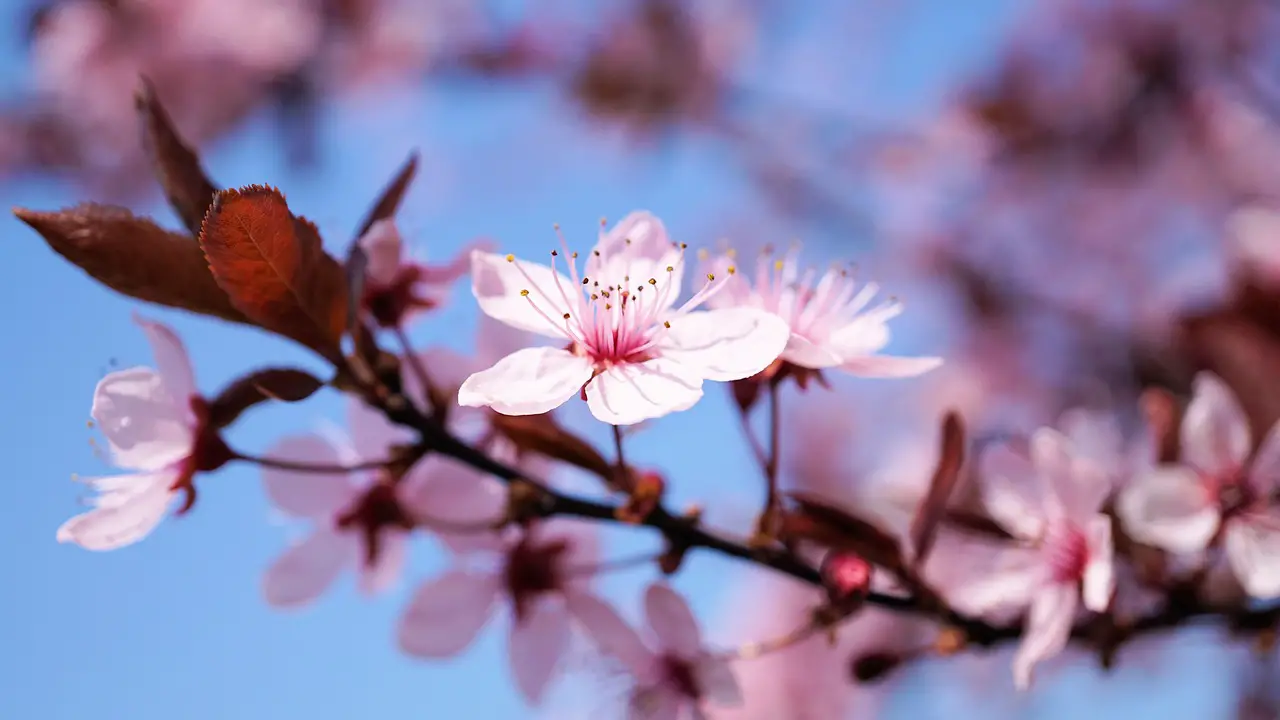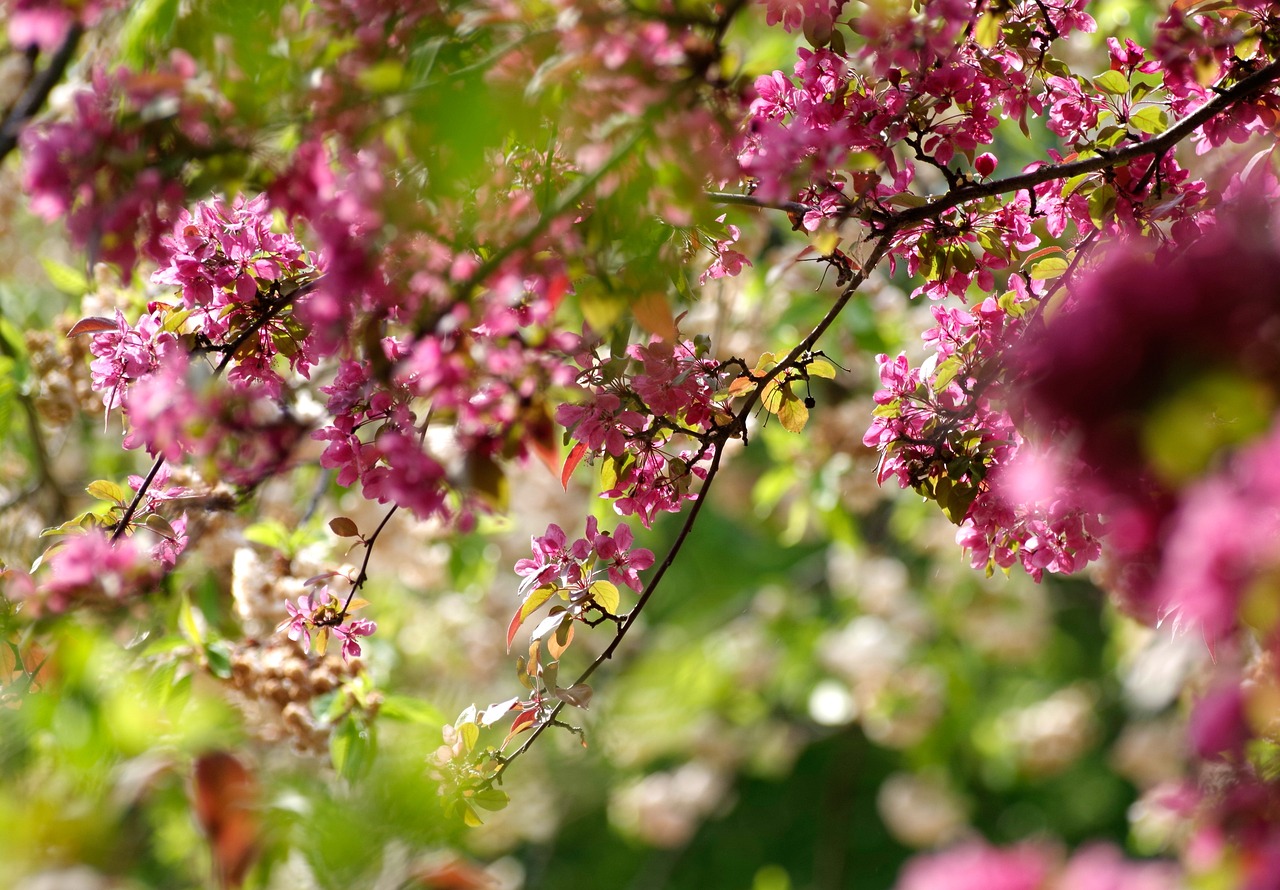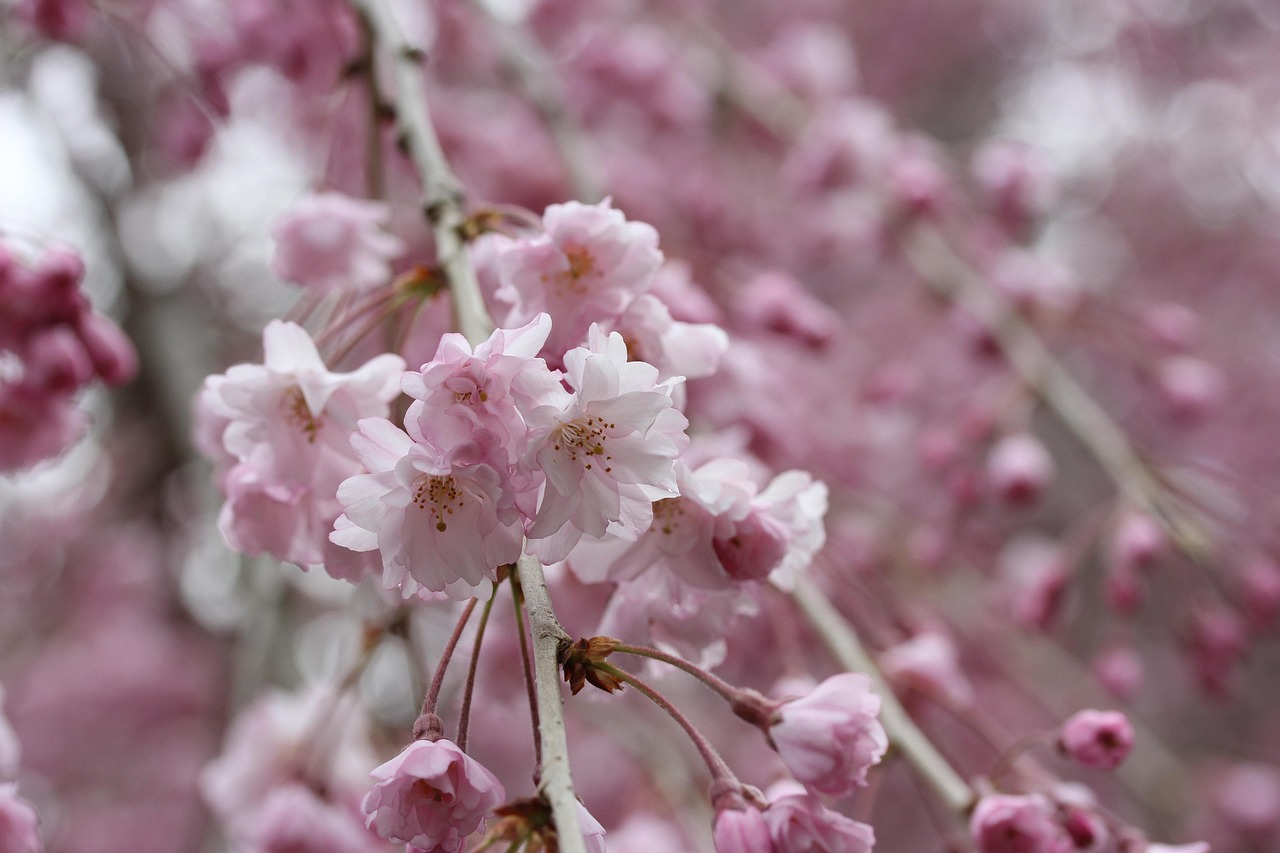Weeping cherry tree pruning is essential for maintaining the tree’s graceful shape and promoting healthy growth. Proper techniques enhance its cascading elegance, encourage blooming, and prevent overcrowding, ensuring a stunning display every spring.
The weeping cherry tree, known for its striking drooping branches and beautiful blossoms, is a favorite among gardeners and landscapers alike. Its delicate flowers create a stunning spectacle in the spring, attracting attention and admiration. However, to maintain its unique form and ensure vibrant health, regular pruning is necessary. Pruning not only shapes the tree but also encourages better air circulation and sunlight penetration, which are crucial for a thriving plant.

Understanding the structure of the weeping cherry tree helps in executing effective pruning techniques. The branches typically grow downward in a cascading manner, creating an enchanting visual effect. This natural habit can be enhanced through careful cutting and shaping. Weeping cherry trees come in various varieties, each with its own specific needs and characteristics.
Understanding Weeping Cherry Trees
Weeping cherry trees belong to the Prunus genus, which includes many other flowering trees. These trees are particularly popular for ornamental landscaping due to their stunning blooms and attractive foliage. Below are some key features of weeping cherry trees:
| Feature | Details |
|---|---|
| Height | Typically 20 to 30 feet |
| Spread | Can reach up to 25 feet wide |
| Bloom Time | March to April, depending on the variety |
| Leaf Color | Green in summer, turning yellow or orange in fall |
Pruning weeping cherry trees is more than just cutting branches. It is an art that involves understanding the growth patterns of the tree. The goal is to maintain its cascading style while promoting health and vigor. Proper pruning techniques ensure that the tree remains visually appealing and can thrive for many years.

When to Prune Weeping Cherry Trees
The timing of pruning can significantly impact the health of your weeping cherry tree. It is generally recommended to prune during late winter or early spring before new growth begins. This timing allows you to see the tree’s structure clearly without foliage obstructing your view. Late winter pruning helps remove any damaged or dead branches while encouraging fresh growth as the weather warms.
However, caution is necessary during the blooming period. Pruning when flowers are present can result in the loss of blooms for that season. Therefore, it is best to wait until after the blossoms fall if you prefer to enjoy their beauty before trimming.
Essential Pruning Techniques
Effective pruning involves various techniques tailored to enhance the shape and health of the tree. Here are some essential methods for pruning weeping cherry trees:

- Thinning: Remove some of the inner branches to improve air circulation and light penetration.
- Shaping: Trim the tips of branches to maintain the desired cascading form.
- Deadheading: Cut away spent flowers to promote new growth and prevent disease.
- Crown Reduction: If the tree becomes too large, selectively reduce its height while maintaining its shape.
Each technique serves a specific purpose, and using them correctly will lead to a healthier and more attractive tree. It is vital to use sharp, clean tools to make precise cuts. This reduces the risk of injury to the tree and minimizes the chance of disease transmission.
Tools Needed for Pruning
Having the right tools is crucial for successful pruning. Here are some essential tools you should consider using:
- Bypass Pruners: Ideal for cutting small branches up to ¾ inch thick.
- Loppers: Suitable for larger branches up to 2 inches thick.
- Saw: A hand saw or pole saw can help with larger limbs that require more power.
- Gloves: Protect your hands from cuts and scrapes while handling branches.
- Safety Glasses: Keep your eyes safe from flying debris.
Selecting high-quality tools ensures clean cuts and reduces strain on your hands during the pruning process. Regular maintenance of your tools will also prolong their life and effectiveness.

Understanding how to properly prune a weeping cherry tree will enhance its beauty and health. Each step in the process contributes to the overall elegance of this charming tree, making it a highlight in any landscape. The effort invested in pruning will pay off with stunning displays of flowers year after year.
Pruning Techniques for Weeping Cherry Trees
Pruning weeping cherry trees involves several specialized techniques to ensure the tree maintains its natural beauty while promoting healthy growth. Each technique serves a unique purpose and should be executed with care and precision. Below, we explore some effective pruning methods that can be applied to enhance the tree’s cascading elegance.
Thinning Out
Thinning out is a vital pruning technique that focuses on removing excess branches to improve light penetration and air circulation. This process helps prevent diseases and encourages the growth of healthy foliage. Here are steps for effective thinning:
- Identify crowded areas in the tree where branches are overlapping.
- Choose branches that are dead, damaged, or growing inward.
- Make clean cuts at the branch collar to promote healing.
By thinning out the canopy, you allow more sunlight to reach the inner branches, which can lead to a more vibrant and lush appearance overall.
Shaping the Tree
Shaping is essential for maintaining the weeping cherry’s iconic form. This technique involves selectively trimming the tips of branches to encourage a graceful, cascading growth pattern. Follow these steps for effective shaping:
- Assess the tree’s structure: Stand back and visualize the desired shape.
- Trim selectively: Focus on the outer branches that create the drooping effect.
- Cut at an angle: This promotes healthy growth and reduces water accumulation on cut surfaces.
Shaping not only enhances the aesthetic appeal but also encourages the tree to maintain its characteristic weeping habit.
Managing Flower Production
To ensure a stunning display of flowers each spring, managing flower production through careful pruning is essential. Here are some tips for effective flower management:
- Deadheading: Remove spent blooms after flowering to redirect energy into new growth rather than seed production.
- Avoid heavy pruning during bloom time: This ensures you do not sacrifice blooms for the upcoming season.
- Prune selectively: Focus on older branches that may not produce as many flowers and encourage new growth instead.
This proactive approach to flower management promotes a more vibrant display each year, making your weeping cherry tree a focal point of beauty in your garden.
Common Mistakes to Avoid
While pruning is beneficial, there are common mistakes that gardeners should avoid to ensure the health and beauty of their weeping cherry trees. Being aware of these pitfalls can lead to more successful pruning outcomes.
Over-Pruning
One of the most significant mistakes is over-pruning. Excessive cutting can stress the tree, leading to stunted growth and fewer blooms. It is essential to prune only what is necessary. Here are tips to avoid over-pruning:
- Limit pruning to 20% of the tree’s canopy per season.
- Assess each cut’s necessity carefully before proceeding.
- Avoid pruning during peak growth seasons.
Poor Timing
Timing is crucial when pruning weeping cherry trees. Pruning at the wrong time can damage the tree or affect its blooming cycle. To avoid poor timing, consider these guidelines:
- Prune during late winter or early spring before buds swell.
- Avoid pruning during fall, as it may encourage new growth that won’t survive winter.
- Pay attention to local weather conditions; ensure there are no imminent frosts after pruning.
Caring for Your Weeping Cherry Tree Post-Pruning
After completing the pruning process, it is important to care for your weeping cherry tree to promote recovery and healthy growth. Here are some care tips:
- Watering: Ensure adequate watering, especially during dry spells. Newly pruned trees may require additional moisture as they recover.
- Mulching: Apply a layer of mulch around the base of the tree to retain soil moisture and suppress weeds.
- Pest Monitoring: Keep an eye out for pests or diseases that may take advantage of any stress from pruning.
Caring for your weeping cherry tree after pruning helps it bounce back stronger and more vibrant. By following these practices, you ensure that your tree continues to thrive and provide beauty in your landscape for years to come.
The Benefits of Regular Pruning
Regular pruning offers numerous benefits that contribute to the overall health and aesthetic appeal of weeping cherry trees. Understanding these advantages reinforces the importance of incorporating pruning into your annual gardening routine. Some key benefits include:
- Enhanced Aesthetics: A well-pruned tree maintains its graceful form and displays an impressive bloom.
- Improved Health: Thinning out unhealthy branches reduces disease risk and promotes vigorous growth.
- Increased Lifespan: Regular maintenance extends the life of your weeping cherry tree by preventing structural issues and promoting resilience.
The cumulative effects of regular pruning lead to a healthier, more beautiful tree that enhances your garden’s charm. Embracing these practices ensures your weeping cherry tree remains a focal point of elegance and grace in any outdoor space.
Identifying the Right Variety of Weeping Cherry Trees
Choosing the right variety of weeping cherry tree is essential for ensuring that you have a tree that fits your specific landscape needs and aesthetic preferences. Different varieties exhibit unique characteristics in terms of growth habits, flower colors, and overall size. Understanding these differences can help you make an informed decision.
Popular Varieties
There are several popular varieties of weeping cherry trees that are commonly grown. Each has distinct features that may influence your choice:
| Variety | Height | Flower Color | Bloom Time |
|---|---|---|---|
| Weeping Higan Cherry (Prunus subhirtella ‘Pendula’) | 15-25 feet | Pink to white | March to April |
| Snow Fountain Cherry (Prunus x subhirtella ‘Snow Fountain’) | 8-12 feet | White | April |
| Weeping Cherry (Prunus serrulata ‘Kanzan’) | 20-30 feet | Pink | April |
| Royal Burgundy Weeping Cherry (Prunus serrulata ‘Royal Burgundy’) | 15-25 feet | Pale pink | April |
When selecting a variety, consider the space you have available, the desired height, and the color of blooms you prefer. Each variety may thrive better in different environmental conditions, so understanding their needs can also influence your selection.
Understanding Growth Patterns and Habits
Each weeping cherry variety has its own growth patterns and habits that impact how you should prune them. Familiarizing yourself with these habits can help you plan your pruning strategy effectively.
Growth Rate
The growth rate of weeping cherry trees can vary significantly among varieties. Some may grow rapidly, while others take their time to establish themselves. Here are some factors to consider regarding growth rates:
- Soil Quality: Rich, well-draining soil promotes faster growth.
- Watering: Regular watering during dry spells encourages healthy growth.
- Sunlight: Full sun exposure typically leads to quicker growth.
Understanding the growth rate helps you plan your pruning schedule. Faster-growing varieties may require more frequent pruning to maintain their shape and health.
Branch Structure
The branch structure of weeping cherry trees is crucial for determining where and how to prune. Some varieties have more upright growth, while others have a more pronounced drooping habit. Here are some key points regarding branch structure:
- Cascading Branches: The iconic weeping form requires careful attention during pruning to maintain its natural beauty.
- Crossed Branches: Identify branches that may rub against each other and remove one to prevent damage.
- Leading Branches: Select a few strong leaders to maintain the tree’s shape without overcrowding.
A clear understanding of the branch structure will guide you in making informed pruning decisions that enhance the tree’s visual appeal.
Pest and Disease Management
Pest and disease management is an integral part of maintaining healthy weeping cherry trees. Common pests can pose serious threats to the tree’s well-being. Knowing how to identify and address these issues is crucial for successful care.
Common Pests
Several pests are known to affect weeping cherry trees. Here are some common ones to watch out for:
- Aphids: Small, soft-bodied insects that suck sap from leaves, leading to wilting.
- Spider Mites: Tiny pests that create webbing on leaves and cause yellowing or stippling.
- Caterpillars: Larvae of various moths can defoliate trees if not controlled.
Regular inspections for these pests can help you catch infestations early, allowing for prompt treatment.
Disease Prevention
Diseases can also affect weeping cherry trees, particularly if they are not pruned correctly or if they are stressed. Some common diseases include:
- Canker: A fungal infection that leads to dead patches on branches; it often requires the removal of affected areas.
- Bacterial Blight: Causes browning and wilting of leaves and stems; good sanitation practices help reduce risk.
- Powdery Mildew: A fungal disease appearing as white powder on leaves; proper air circulation can help prevent it.
Implementing good cultural practices, such as proper watering and spacing, can significantly reduce the risk of these diseases affecting your tree.
Sustainability Practices in Pruning
Sustainable gardening practices benefit both your weeping cherry tree and the environment. By adopting eco-friendly approaches to pruning and care, you contribute to a healthier ecosystem while enhancing the beauty of your landscape.
Organic Pruning Techniques
Utilizing organic methods in your pruning routine helps minimize chemical usage. Here are some sustainable practices to consider:
- Naturally Derived Pesticides: Use eco-friendly pest control methods when necessary.
- Mulching with Organic Materials: Helps retain moisture and suppress weeds without synthetic products.
- Composting: Recycle organic waste from pruning back into the garden as nutrient-rich compost.
Sustainable practices not only enhance the health of your weeping cherry tree but also support the surrounding environment, promoting biodiversity and soil health.
Enhancing Landscape Design with Weeping Cherry Trees
Weeping cherry trees are not only stunning specimens in their own right, but they also play a significant role in enhancing the overall landscape design. Their unique form and seasonal beauty make them versatile elements in various garden styles. Understanding how to incorporate these trees effectively can elevate the aesthetic appeal of your outdoor space.
Creating Focal Points
One of the primary uses of weeping cherry trees in landscaping is to create focal points. Their cascading branches and vibrant blooms draw the eye, making them perfect for placement in key areas of a garden or yard. Here are some tips for using weeping cherry trees as focal points:
- Positioning: Place the tree in a prominent location where it can be viewed from multiple angles. Consider its height and spread when selecting a spot.
- Companion Planting: Surround the tree with complementary plants that bloom at different times, ensuring year-round interest.
- Lighting: Use outdoor lighting to highlight the tree’s features during the evening, creating a magical atmosphere.
By strategically placing weeping cherry trees, you can create stunning visual impacts that enhance your overall landscape design.
Seasonal Interest
Weeping cherry trees provide beauty throughout the seasons, offering different visual elements as the year progresses. Understanding this seasonal interest can aid in designing a vibrant garden:
- Spring: The tree bursts into bloom with delicate flowers, typically in shades of pink or white, creating a breathtaking display.
- Summer: The lush green foliage provides shade and a backdrop for other blooming plants.
- Fall: Leaves transition to vibrant yellows and oranges, adding rich color to your landscape.
- Winter: The tree’s unique structure remains visually appealing, especially when dusted with snow.
This seasonal variation allows for dynamic landscape designs that change throughout the year, making weeping cherry trees valuable additions.
Promoting Biodiversity
Incorporating weeping cherry trees into your landscape can also promote biodiversity. These trees attract various pollinators, such as bees and butterflies, which play crucial roles in maintaining healthy ecosystems. Here are ways to encourage biodiversity in your garden:
- Diverse Plant Selection: Include a mix of native plants and flowering species that can support local wildlife.
- Create Habitats: Leave areas of your garden wild or include features like birdhouses and insect hotels to support different species.
- Avoid Pesticides: Limit chemical use to protect beneficial insects and maintain a healthy ecosystem.
By fostering biodiversity, you create a thriving environment that benefits not only your weeping cherry trees but also the wider ecosystem.
Final Thoughts
Caring for and pruning weeping cherry trees requires knowledge and dedication, but the rewards are well worth the effort. These trees are remarkable not only for their cascading elegance but also for the myriad benefits they bring to your landscape. From enhancing aesthetic appeal to promoting biodiversity, weeping cherry trees serve multiple purposes in any garden setting.
Through proper pruning techniques, seasonal care, and sustainable practices, you can ensure that your weeping cherry trees remain healthy and beautiful for years to come. By understanding their specific needs and characteristics, you can create a stunning focal point that captures attention and admiration at every stage of growth. Moreover, embracing eco-friendly practices contributes positively to the environment while enriching your gardening experience.
Investing time and effort into the maintenance of your weeping cherry tree will yield countless rewards as it graces your landscape with its beauty, charm, and elegance, solidifying its place as a cherished element in your outdoor space.
